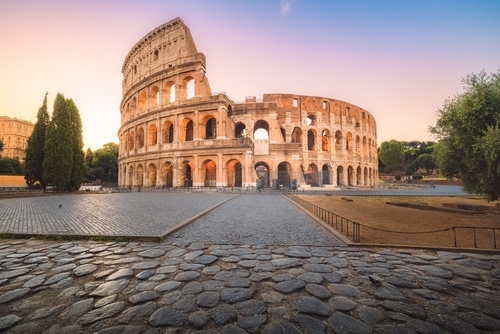The City Under Pompeii’s Ashes, and 4 Other Sites That Civilizations Built Over
Posted on Categories Discover Magazine

Civilizations rise and fall, and sometimes, they fall on top of each other. Part of the reason that civilizations are born is their location, and over time, that location largely remains the same even though the city it hosts changes.
These archeological sites are layered on top of each other, telling the story of one society, its rise, and then the next that came in its place.
1. Pompeii
(Credit: Ivo Antonie de Rooij/Shutterstock)
Pompeii is well known as a city that was decimated by the eruption of Mount Vesuvius in 79 A.D. The city, first discovered in the 1700s under the control of the Bourbon Monarchy, was left frozen during its worst catastrophe.
We know about the eruption both from its volcanic remains and from the vivid and moving letters written by an ancient Roman named Pliny the Younger around the time of the eruption.
But, according to historian Caitie Barrett, under Pompeii, there was also an early Iron Age society built before the Romans conquered the city.
“We’re able to see the impact of the Roman conquest and how it shaped Pompeii,” says Barrett, an archaeologist at Cornell University. Once the Romans conquered, they basically “mc-mansioned” the city, she added.
Read More: How These 5 Ancient Cities Fell Victim to a Volcano’s Destruction
2. The Temple Mount
(Credit: ArtMediaFactory/Shutterstock)
Temple Mount miniature model exposed in Davidson Center excavation archeological park in Jerusalem Old City
This might be one of the greatest examples of archeological layers. The city of Jerusalem has more than 30 centuries of continuous recorded history. For example, the Ophel Archeological Garden is located in the southeast corner of the Temple Mount, the site of the Temple of Jerusalem, which was destroyed by the Romans in the 9th century. The Tower of David is another site that’s home to layers of structures built by King Herod as well as those from the Roman, Byzantine, and Crusader periods.
Read More: Was King Solomon’s Temple a Real Place?
3. The Duomo
(Credit: Roberto Binetti/Shutterstock)
Florence is another city rich in history, so it should be no surprise that its structures have layers of archeology. The Duomo, for example, is the most famous site in Florence. Construction began in 1296 under the guidance of Arnolfo di Cambio and wasn’t completed until 1436.
Underneath the Duomo is the ancient basilica of Santa Reparata, part of the old church that was built during the Early Middle Ages around the 5th century, though we don’t know the time for sure.
Florence’s Ancient Roman Theater is another great example. Found beneath the famous Palazzo Vecchio, the theater once sat 15,000 people and was in use from the 1st through the 3rd centuries.
Read More: This Ancient “Backwater” Town Flourished For 900 Years
4. Notre-Dame de Paris
(Credit: Stockbym/Shutterstock)
It’s one of the most famous cathedrals in the world and has a history all its own. Before the cathedral was opened in 1345, many civilizations had already borne witness to the site.
The Gallo-Roman town of Lutetia was developed during the reign of Augustus (27 B.C.E. to 14 A.D.) and was inhabited by a tribe called wait for it: the Parisii.
The Île de la Cité, or “Island on the Seine,” was fortified in 308 A.D. to protect against barbarian invasion by Germanic tribes. Construction didn’t begin on the Notre-Dame de Paris until the Middle Ages in 1163.
Read More: What Is the Lost Empire Of Tartaria?
5. Roman Bureaucracy
(Credit: Stephen Bridger/Shutterstock)
Rome’s layers run deep. From the Ancient period to the late Antique to the Medieval to the Renaissance, the city has hosted civilizations a plenty, and its archaeology tells the tale. The layers of sediment and various structures mark each period in its history.
Some structures, like the Pantheon and Coliseum, lasted throughout various periods and were built and rebuilt in response to natural and unnatural disasters.
For example, the Tabularium was an office of record keeping in ancient Rome. The large structure built atop it is the Palazzo Senatorio, which is the modern-day city hall and still houses the office of the mayor.
Read More: The Hierarchy of the 1200-Year-Long Roman Empire
Article Sources
Our writers at Discovermagazine.com use peer-reviewed studies and high-quality sources for our articles, and our editors review for scientific accuracy and editorial standards. Review the sources used below for this article:
Sara Novak is a science journalist based in South Carolina. In addition to writing for Discover, her work appears in Scientific American, Popular Science, New Scientist, Sierra Magazine, Astronomy Magazine, and many more. She graduated with a bachelor’s degree in Journalism from the Grady School of Journalism at the University of Georgia. She’s also a candidate for a master’s degree in science writing from Johns Hopkins University, (expected graduation 2023). Find her on socials @sarafnovak